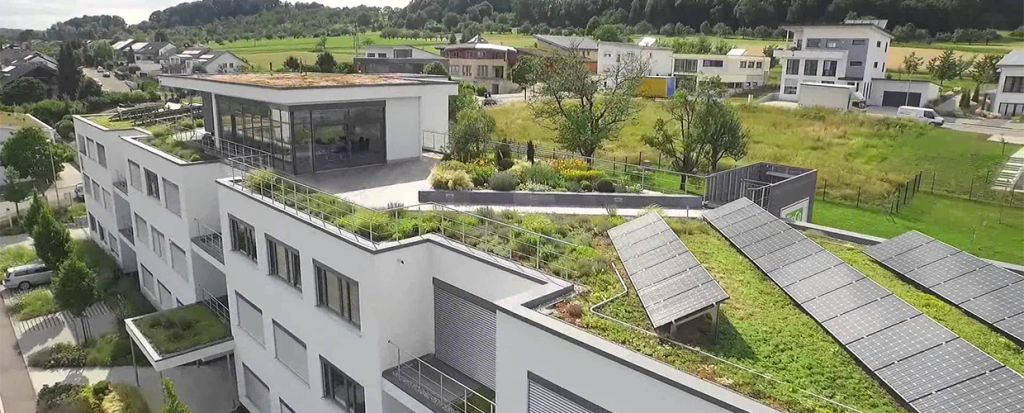Eco-friendly roofing is not just a trend; it’s a necessity for the future of sustainable living. As climate change continues to accelerate, we must adopt environmentally conscious practices in all our lives, including home construction and maintenance. Eco-friendly roofing materials, such as solar tiles and recycled materials, offer numerous benefits, including energy efficiency, reduced environmental impact, and increased property value. Purchasing environmentally-friendly roofing can help make the planet healthier and build a more sustainable future for yourself and future generations. Additionally, with the integration of automatic monitoring systems, you can optimize the performance of your eco-friendly roof, ensuring that it remains efficient and effective over time.
Benefits of Eco-Friendly Roofing
Ecologically responsible roofs offer multiple advantages, such as conserving energy and improving air quality. Environmentally friendly roofs often use materials with low environmental impact in their production and are recyclable after use. Cool roofs can reflect more sunlight and take in less heat than traditional roofing materials, reducing energy consumption for cooling needs. In addition, these roofs decrease the urban heat island effect by generating more relaxed atmospheres in densely populated cities.
Another significant advantage is the possibility of lowering total home upkeep expenses. Environmentally conscious roofing materials are generally more long-lasting and resilient against harsh weather conditions, reducing the need for frequent repairs and replacements. This helps save money and decrease the environmental impact of producing and delivering new materials.
Types of Sustainable Roofing Materials
- Recycled Shingles: These are made from waste materials like rubber and plastic. They offer durability and a pleasing aesthetic while helping reduce landfill waste. They are available in various styles and colors, making them versatile for different architectural designs.
- Metal Roofs: Metal roofing is strong and frequently crafted from reused materials. They can endure harsh weather conditions and live for as long as 70 years. Additionally, they are great at bouncing off sunlight, aiding in maintaining cooler temperatures within households during the summer.
- Green Roofs: Green roofs utilize plant layers that provide insulation and reduce stormwater runoff. They can convert city spaces into green areas, enhancing air quality and creating a home for wildlife. Furthermore, green roofs can significantly decrease the temperature of the roof surface, thereby decreasing the impact of the heat island effect.
- Clay and Slate Tiles: Natural, long-lasting, and recyclable materials. Clay and slate tiles provide excellent insulation properties and have a timeless, classic look. Additionally, they are resistant to fire and can endure severe weather, making them an excellent option for regions susceptible to extreme conditions.
- Solar Tiles: Solar tiles produce electricity and also function as roofing material. They blend smoothly with the roof design, creating a sleek and contemporary appearance. Over time, the money saved on energy from solar tiles can balance out the money spent on their initial installation, turning them into a financially practical and eco-friendly option in the long term.
Installation Techniques for Sustainable Roofs
Setting up an environmentally friendly roof involves utilizing particular methods to enhance its sustainability advantages. Adequate insulation is crucial to avoid wasting energy. Reflective coatings can improve cooling efficiency, decreasing the reliance on air conditioning. A professional installation is essential to guarantee the longevity and efficiency of the roofing materials utilized.
Combining water drainage systems with rooftop gardens can also help improve water management and increase green space. These techniques aid in preserving moisture, decreasing runoff, and supplying natural insulation. Employing environmentally friendly adhesives and sealants can increase the sustainability of the roofing system.
Impact on Energy Efficiency
Eco-friendly roofs can considerably impact a home’s energy efficiency. Reflective roofing materials and green roofs can reduce cooling costs in hot climates. Additionally, solar tiles or panels can generate electricity, decreasing reliance on non-renewable energy sources and lowering utility bills. For more insights, refer to this EPA article on green roofs.
Furthermore, materials like clay and slate tiles have insulation properties that help maintain a consistent indoor temperature, minimizing the requirement for excessive heating and cooling. Sustainable roofs help decrease energy costs and environmental impact by enhancing a home’s energy efficiency.
Maintenance and Longevity
The durability of sustainable roofing is one key factor that makes it appealing. Metal roofs, for instance, have the potential to endure for 70 years while requiring only minimal upkeep. Frequent examinations and prompt repairs can prolong the life of an environmentally friendly roof. Frequently utilizing sustainable materials typically results in fewer replacements, ultimately conserving money and resources in the long run.
Adopting automatic monitoring systems can further enhance maintenance practices. These systems can detect issues early, allowing for prompt repairs and preventing significant damage. Regular cleaning and inspection of the roofing materials can prevent the buildup of debris and moss, ensuring the roof remains functional and aesthetically pleasing for years.

